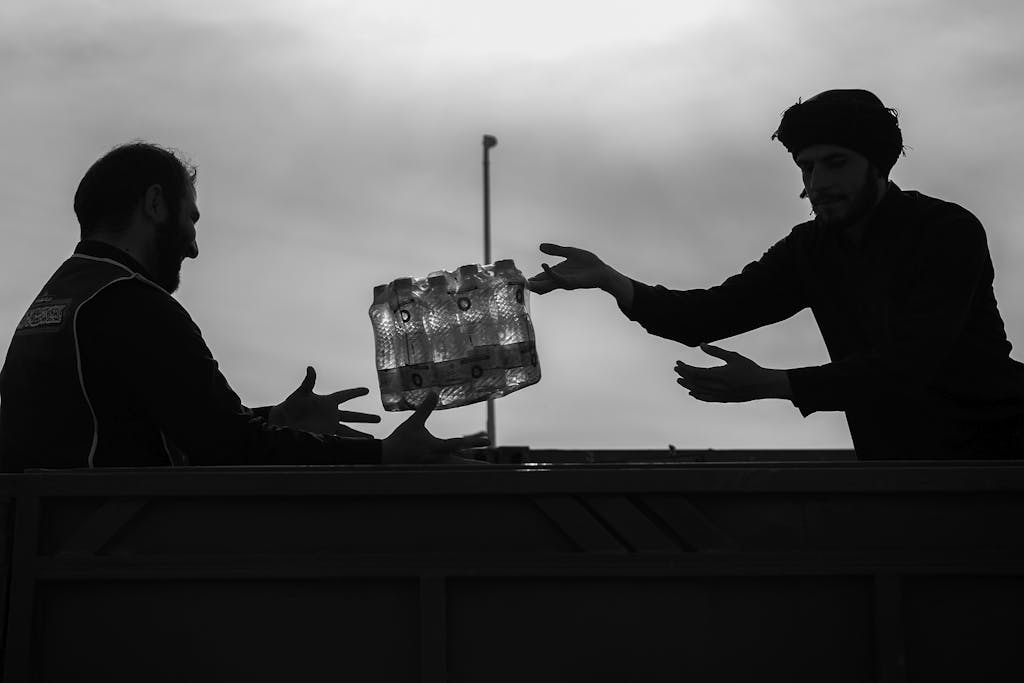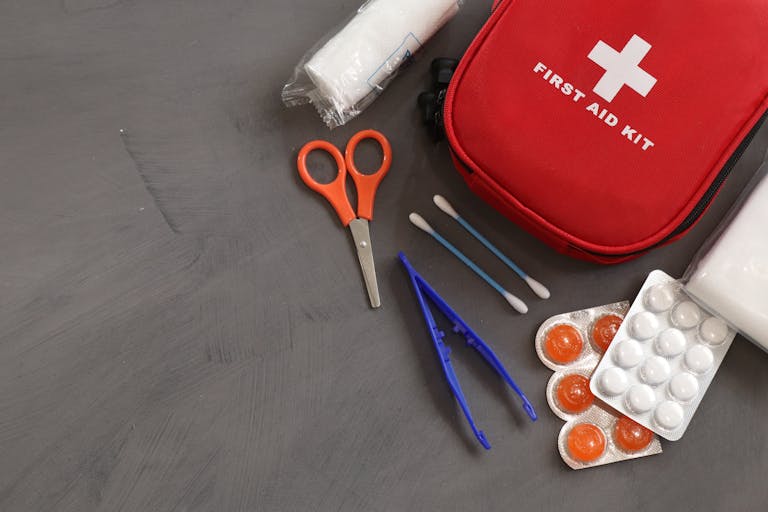Your 3-Day Emergency Water Plan: Simple Steps for Safe Storage
Why Water Preparedness Matters

In the UK, emergencies such as floods, burst mains, or power outages can disrupt access to clean tap water. The government’s Prepare campaign advises households to be self-sufficient for at least three days during such events.
While water companies are legally required by Ofwat to provide a minimum of 10 litres of water per person per day within 24 hours of a supply failure—and to maintain that each day until the connection is restored—this support is typically delivered through bottled water stations or temporary tanks (bowsers). Depending on the scale of the emergency, it may not be immediate or convenient.
Having your own emergency water supply at home means you don’t have to rely on external assistance during the crucial first hours of an incident. It’s a simple, low-cost way to boost your resilience and peace of mind.
How Much Water Should You Store?
The World Health Organisation recommends a minimum of 2.5 to 3 litres of drinking water per person per day for survival. To cover drinking, cooking, and basic hygiene, 10 litres per person per day is advised.
For a 3-day supply:
- Drinking only: 3 litres x 3 days = 9 litres per person
- Drinking + hygiene: 10 litres x 3 days = 30 litres per person
Don’t forget pets! A medium-sized dog may require about 1 litre per day.
Storage Options
1. Bottled Water
Bottled water is one of the easiest and most accessible ways to build a short-term water supply.
- Pros: Convenient, long shelf life, no setup required
- Cons: More expensive long-term and creates plastic waste
Cost-effective and accessible:
12-packs of 500ml bottled water are widely available in UK supermarkets like Asda, Tesco, Aldi, and Lidl—typically priced between £1.50 and £1.80 per case. This makes it an affordable option for most households.
If you already drink bottled water regularly, there’s no need to stockpile anything extra long-term. Simply make sure you always have at least two cases of bottled water per person on hand. Use the oldest case first, and replace it as you go to keep your supply fresh.
How much to store:
- 1 case (12 x 500ml) = 6 litres
- WHO recommends 9 litres per person for drinking over 3 days
- So, 2 cases per person easily covers that recommendation
For a family of four, storing 8 cases provides enough for 3–4 days of drinking water, meeting and slightly exceeding WHO guidelines. The total cost? As low as £12.
2. Reusable Water Containers
Storing water in reusable containers is an eco-friendly and cost-effective way to ensure you have access to water during an emergency. It’s a flexible solution that allows you to use the containers for other purposes once the water has been used. Here are several options to consider for building your water stockpile:
Spring Water Bottles (5L)
Many supermarkets, including Tesco, Asda, and Sainsbury’s, offer 5-litre spring water bottles. These large containers are often sold in packs and can be an excellent choice for emergency water storage. Once the water is consumed, you can refill these bottles with tap water for continued use, making them a durable addition to your preparedness plan.
Because these bottles are designed for longer storage and are typically made from robust plastic, they can last for many refills—meaning you won’t need to continuously purchase new containers. You can easily store several of these bottles in a cool, dry place to create an effective and convenient water supply.
Collapsible Water Containers
Collapsible water containers, often used for camping, are another excellent option. These containers are usually made from flexible, durable materials, which makes them easy to store when not in use. They are particularly handy if you’re short on space or looking for a solution that can be used for multiple purposes.
Consider using collapsible containers for emergency water storage as they can be easily filled, moved, and stored around the house. They come in a variety of sizes, from 5 to 25 litres, and can be refilled with either tap water or water collected from emergency water bowsers (more on that below).
Repurposing Plastic Water Bottles
If you regularly purchase plastic bottled water, don’t throw the bottles away once they’ve been used. Instead, rinse and reuse them for water storage. While single-use plastic bottles aren’t designed for long-term storage, they can still be used effectively in the short term—particularly if you have advanced warning that your water supply might be interrupted.
Used plastic bottles, such as the typical 500ml to 2L plastic water bottles, can be filled with water and stored for up to a few weeks. Simply make sure to store them in a cool, dark place to preserve the quality of the water. If you’ve consumed the original contents and kept the bottles clean, they can provide a reliable backup storage option during emergencies.
Additionally, if there are emergency water bowsers (temporary water distribution points) set up in your area, these bottles can be filled with water from these sources to top up your reserves.
Why Reusable Containers Are a Good Choice
- Environmentally friendly: Reduces waste from buying bottled water over and over again.
- Flexible use: Once water is consumed, containers can be repurposed for other purposes, such as storing other liquids or using them during camping trips or picnics.
- Cost-effective: After the initial purchase, you can reuse containers repeatedly, saving money over time.
- Convenience: Many of these containers, like the collapsible ones, are easy to store, especially if you’re short on space. They’re also easy to fill and carry.
Additional Tips:
- Label and date your containers to keep track of how long the water has been stored.
- Rotate your stock regularly—using the oldest water first and refilling it with fresh tap water to maintain a healthy supply.
- Store water in various types of containers—this way, if one type of container gets damaged, you’ll still have alternatives available.
3. Garden Water Butts
A garden water butt can be an excellent, cost-effective solution for supplementary water during an emergency. Available from most DIY stores like B&Q, online marketplaces like Amazon, and even the middle aisles of Aldi and Lidl (at the right time of year), water butts are a practical addition to your preparedness plan.
It rains frequently in the UK, so while water from a garden butt might not be suitable for drinking, it is ideal for flushing toilets or having a quick wash.
Water for Toilets:
Toilets have a capacity of around 6-8 litres per flush. The average person flushes the toilet 5 times per day, using around 40 litres of water just for this purpose. When the water supply is cut off, it’s essential to be able to flush toilets while conserving as much water as possible.
A typical water butt can hold between 100–200 litres of water. While that might seem like a lot, it’s important to be conservative with your usage. Unless the water goes off during a period of ongoing rain, you may run out of stored water quickly if you’re not mindful.
How to Conserve Water:
- Use 5-litre water bottles to transfer water from the butt to the toilet cistern.
- Flush only when necessary—aim to halve the number of flushes per day to stretch your supply further.
For a family of four, regular toilet flushing could consume 160 litres a day. This means a 100-litre water butt could barely last a day under normal usage. Cutting back on flushes, even by just half, can make all the difference in conserving your supply.
Practical Storage Tips
- Keep water in a cool, dark location like a cupboard, utility room, or under a bed
- Avoid extreme temperatures: Don’t let water freeze or sit in direct sunlight
- Store in multiple spots around your home in case one area becomes inaccessible
- Use stackable or space-saving containers if you’re tight on room
Final Thoughts
Preparing a 3-day emergency water supply is simple, affordable, and potentially life-saving. Whether you start with a few bottled litres, invest in reusable storage containers, or set up a garden water butt, the most important thing is to start now.
Clean, safe water is something we often take for granted—until it’s no longer available. By setting aside just a small supply today, you’re taking a big step toward being ready for the unexpected.
For more official advice, visit:
Ofwat’s guidance on supply interruptions
The UK Government’s Prepare campaign
Have your own Thoughts? Leave a comment Below 🙂
A little disclosure: there are affiliate links on this website! That just means if you click on a link, find something you like and buy it, this site might receive financial benefit. Don’t worry, you won’t pay any extra – sometimes you might even get a discount. These links help to pay for the upkeep of the site.
Disclaimer: The content of this website is opinion and should never be considered as professional advice. Always consult a professional in the relevant areas.





